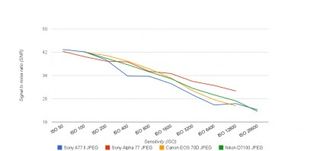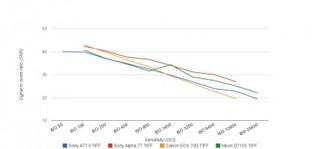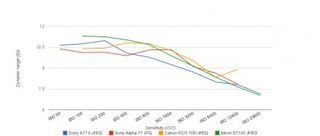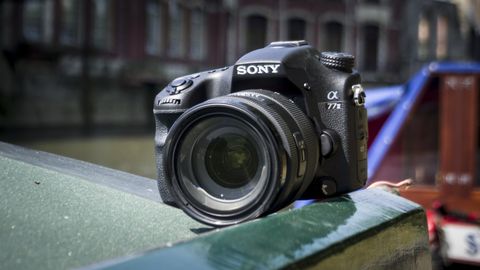Why you can trust TechRadar
We shoot a specially designed chart in carefully controlled conditions and the resulting images are analysed using DXO Analyzer software to generate the data to produce the graphs below.
A high signal to noise ratio (SNR) indicates a cleaner and better quality image.
For more more details on how to interpret our test data, check out our full explanation of our noise and dynamic range tests.
Here we compare the Sony Alpha 77 II with the original Sony Alpha 77, Canon 70D and Nikon D7100.
JPEG Signal to Noise Ratio

Although the Alpha 77 II's signal to noise ratio starts off very high at the lowest sensitivity setting, it soon dips below that of competeing cameras, indicating that the images are noisier. However, this may be in an attempt to maximise detail from the lower pixel count sensor.
Raw Signal to Noise Ratio

The Alpha 77 II is one of the lower performing cameras here, but as with the JPEG images, this may be to reveal more detail.
JPEG Dynamic Range

While the Sony Alpha 77 II's dynamic range is good, it lags behind that of competing cameras for much of its sensitivity range.
Raw Dynamic Range

As with the JPEG images, the Sony Alpha 77 II's raw file (after conversion to TIFF) dynamic range lags behind that of competing cameras throughout the majority of its sensitivity range.
Current page: Noise and dynamic range
Prev Page Image quality and resolution Next Page Sample images
